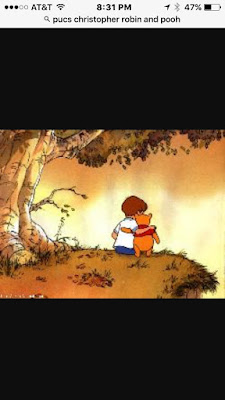by

Sherril Smoger-Kessous's review goodreads
really liked it
bookshelves: audio-book, cloudlibrary-audiobook, non-fiction, reviewed
⭐️ ⭐️ ⭐️ ⭐️ 4 big bright stars for this beautiful book.
It was on my TBR list for a year and then I found it included in my library’s cloudlibrary audiobook list. I downloaded it and began reading (listening) immediately. This was a book that was enhanced by the listening experience because Sy Montgomery, the author, read it with such admiration and love for her subject matter, that it was infectious. I’ve read reviews that were critical of her writing style and that the book was less scientific than they expected. Believe me, it had more than enough science supporting the physical and behavioral descriptions of Athena, Octavia, Kali and Karma, the octopuses (definitely not octopi) featured in the book. However if it’s a truly scientific book you’re after, The Soul of an Octopus is not for you, but the name itself tells you that.
By the end of this book, you may or may not believe octopuses have a soul, but you will have absolutely no doubt that they are highly intelligent animals that have the ability to remember what they learn, to differentiate and remember people they meet and to have preferences. Whether those preferences are based mainly on the taste of the person (they have eyes, but they gain a large part of what they learn through taste via there many succors on each of their eight arms and they use them to suck enthusiastically on fingers, hands and arms) or something more esoteric, is not certain. The book is filled with fascinating facts about these intriguing invertebrates: they have three hearts, their neurons are in the brain, but of their 500 million or so neurons, around 350 million of them are clustered along the arms, so that their arms are capable of making decisions like finding which device holds food, or which color to use for camouflage depending on the location or problem-solving, including the ability to navigate mazes and open jars.
Though the octopus can be seen as foreign and alien, slimy and weird, almost scary in appearance, one finds oneself feeling as bereft as the author when the octopus she has learned to know and love, dies. You leave the book wanting more all things octopus, even perhaps one day engaging one in person. I look forward to reading an earlier book by Sy Montgomery, The Good, Good Pig.
It was on my TBR list for a year and then I found it included in my library’s cloudlibrary audiobook list. I downloaded it and began reading (listening) immediately. This was a book that was enhanced by the listening experience because Sy Montgomery, the author, read it with such admiration and love for her subject matter, that it was infectious. I’ve read reviews that were critical of her writing style and that the book was less scientific than they expected. Believe me, it had more than enough science supporting the physical and behavioral descriptions of Athena, Octavia, Kali and Karma, the octopuses (definitely not octopi) featured in the book. However if it’s a truly scientific book you’re after, The Soul of an Octopus is not for you, but the name itself tells you that.
By the end of this book, you may or may not believe octopuses have a soul, but you will have absolutely no doubt that they are highly intelligent animals that have the ability to remember what they learn, to differentiate and remember people they meet and to have preferences. Whether those preferences are based mainly on the taste of the person (they have eyes, but they gain a large part of what they learn through taste via there many succors on each of their eight arms and they use them to suck enthusiastically on fingers, hands and arms) or something more esoteric, is not certain. The book is filled with fascinating facts about these intriguing invertebrates: they have three hearts, their neurons are in the brain, but of their 500 million or so neurons, around 350 million of them are clustered along the arms, so that their arms are capable of making decisions like finding which device holds food, or which color to use for camouflage depending on the location or problem-solving, including the ability to navigate mazes and open jars.
Though the octopus can be seen as foreign and alien, slimy and weird, almost scary in appearance, one finds oneself feeling as bereft as the author when the octopus she has learned to know and love, dies. You leave the book wanting more all things octopus, even perhaps one day engaging one in person. I look forward to reading an earlier book by Sy Montgomery, The Good, Good Pig.





















































.jpg)
-0011.jpg)
1.jpg)
-0023.jpg)

34.jpg)

.jpg)
-001.jpg)


79.jpg)
8.jpg)


1.jpg)
-002%2Bje.jpg)
-005%2Be.jpg)
-001%2Be.jpg)
23.jpg)
-0021.jpg)
-001.jpg)


15.jpg)
-002.jpg)








%2Bej.jpg)
-003%2Bejm.jpg)